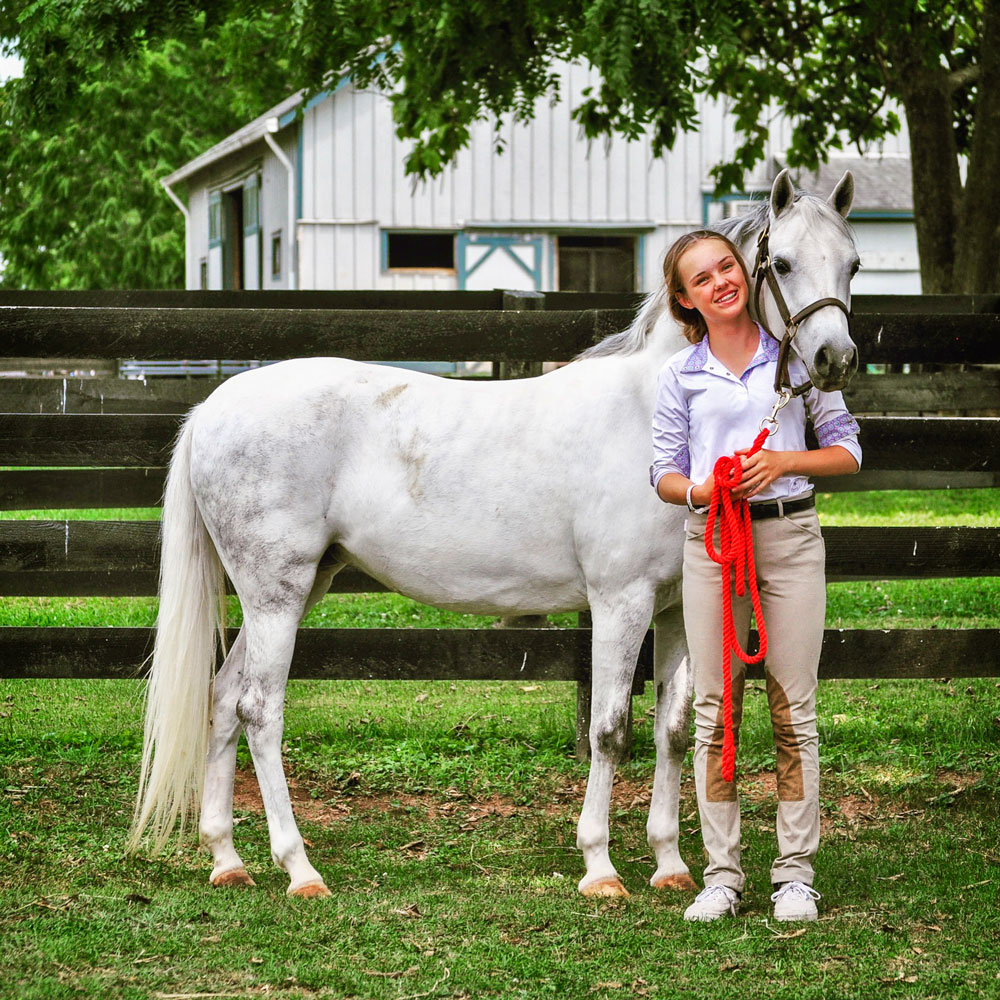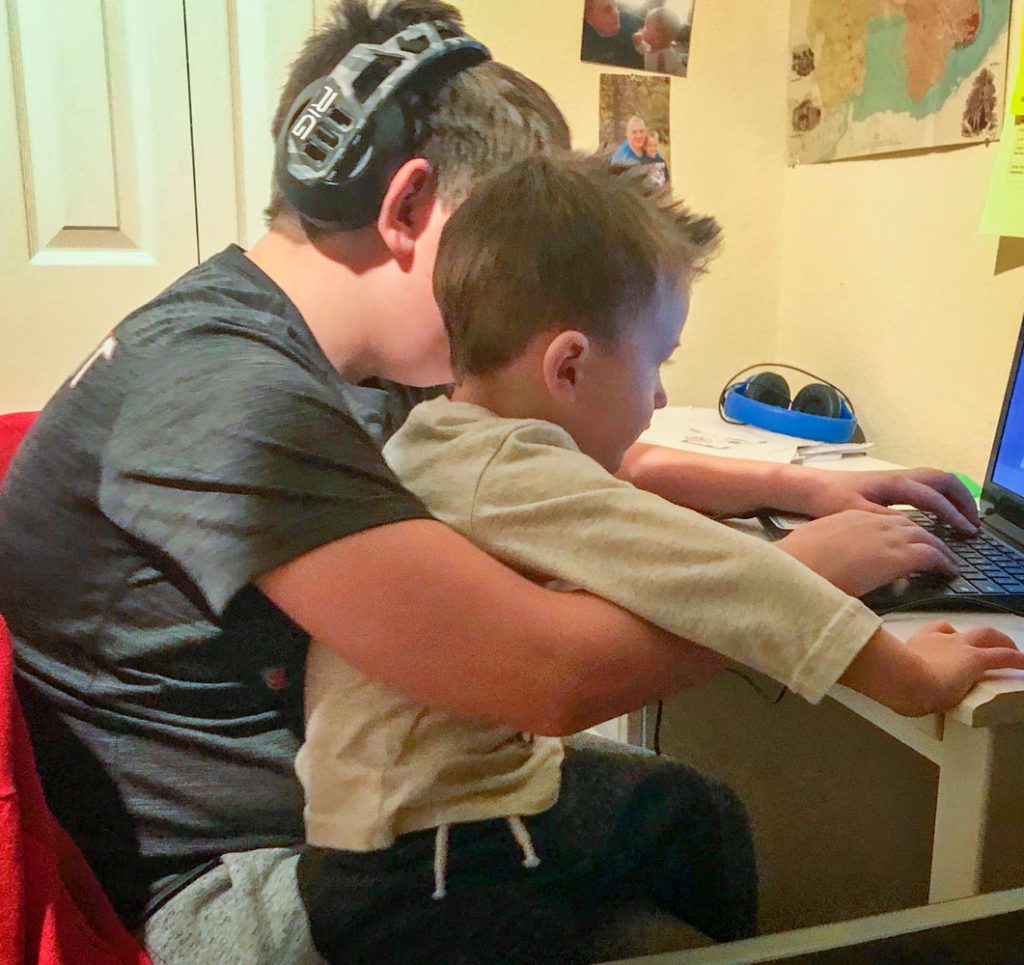The ups and downs of remote learning
By Kathy Fallert; courtesy photos

Castle Pines resident Lucy Butler has thrived during her time of remote learning and has had more time to focus on her passion for riding and training horses.
Students at Douglas County School District (DCSD) elementary schools went back to full-time, in-person learning last month. As of press time, DCSD was still working on a plan to return middle and high schools to a hybrid model. In the meantime, kids at DCSD middle and high schools have been in 100% remote learning.
Wearing masks, limited sports and the absence of typical social gatherings such as homecoming and prom, for many, has taken all the fun out of school when looking at the remote or hybrid models. Additionally, a big interruption to hybrid learning has been the constant quarantines. If a child is exposed to the virus based on their classroom seating chart, they are required to quarantine at home for two weeks which removes them from classes and sports. Hybrid learning is difficult enough, but when a two-week quarantine comes along as it has for many students (and some more than once), it gets even messier.
A mother of five, including two freshmen at RCHS and an eighth grader at RHMS, Jennifer Clayburn, had this to say, “Remote learning with my three older kids has definitely come with more challenges than in-person learning. All three kids are on an individualized education plan (IEP), so it’s been very hard for them to get the support that they need. All three of them find themselves very distracted at home. Having seven people living in a three-bedroom apartment doesn’t leave a whole lot of room for privacy for their video calls especially with their two-year-old younger sibling running around. My older two cry about how much they miss being in school full time and how much they miss their friends.”

Quentin loves having his siblings home doing remote learning. However, it’s challenging when someone interrupts the classroom Zoom calls.
Jennie Cartwright, mother to a middle school son and a high school son commented about her youngest, “He has struggled managing the schedule and misses in-person teachers, friends and getting out of the house. He’s a social guy, so staring at the screen all day and doing so much independent work is hard for him.” As for her high school sophomore, “I’m sad about how much of his high school experience he’s missing! He only had half a normal year as a freshman – then this. He has hard classes – AP and honors. Some classes like advanced French are very difficult to do remotely. He has some really awesome teachers at Rock Canyon, but I know he’d be getting so much more out of class in person with them. I’m 100% for full-time, five days a week school or at the very least hybrid.”
Castle Pines resident, Carrie Butler, has two kids in middle school, James and Maggie, and a senior at RCHS, Lucy. Carrie remarked, “Lucy has never liked Rock Canyon and has begged me to do an online program for years. I resisted because I wanted her to get the RC diploma. When e-learning was an option this year I relented, and she is thriving because she can do it on her own time and spend the rest of her free time pursuing her passion – riding and training horses. This then opened an opportunity for her to be a working student at a facility in Scottsdale this winter. It taught us a huge lesson that all kids are different and they don’t all need/want the typical high school experience.”
On the other hand, her other two children have differing opinions. James loves having more free time, more sleep time and less stress that comes with remote learning. The other side of that is his mom’s concern that as an introvert, he has less interaction with other kids which is a skill he needs to work on. Carrie’s youngest, Maggie, is very social and has struggled with missing out on the normal experiences of sixth grade. However, being more talkative and a lover of school in general has helped Maggie have a better remote learning experience than her siblings due to her increased interaction and effort while online.
Local charter and private schools are operating with full in-person learning five days a week since the spring semester resumed. Some families looking for this option have transferred their students from traditional DCSD schools to places with full in-person classes – even incurring the additional tuition as a result.
Valor Christian High School, for example, has offered in-person learning since returning to school last fall. According to Stone Watson, transfer admissions coordinator for Valor, the school has admitted 35 new transfer students for the spring semester alone, bringing the total number of transfers for the entire 2020-2021 school year to 72 students – an unprecedented number since the school opened its doors in 2006. “It was a blessing to welcome students who were struggling with remote learning, and we’re grateful,” he said.
While some students have adjusted to new learning environments even thriving during the pandemic, others have unfortunately struggled and may have fallen behind, creating a widening disparity in education.